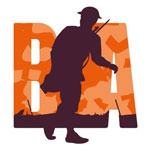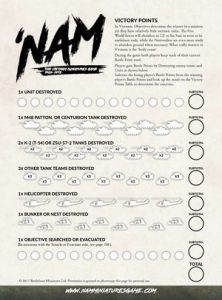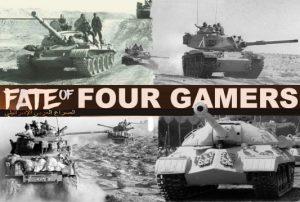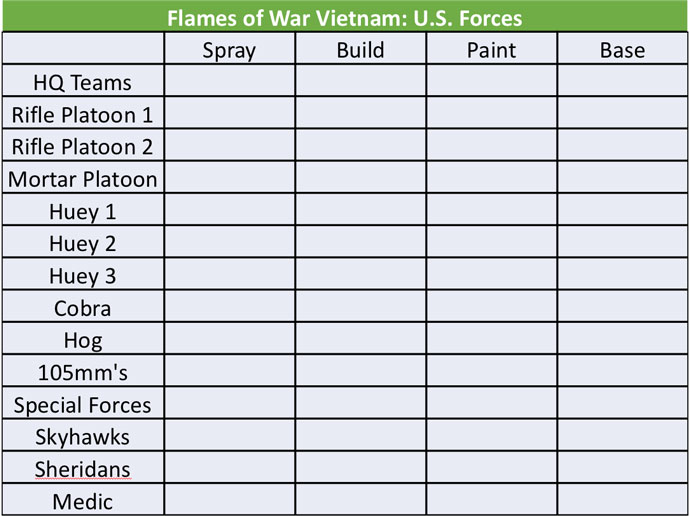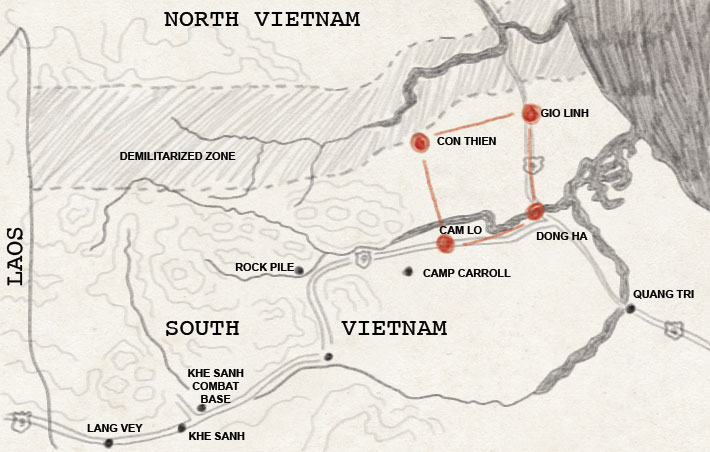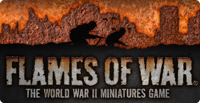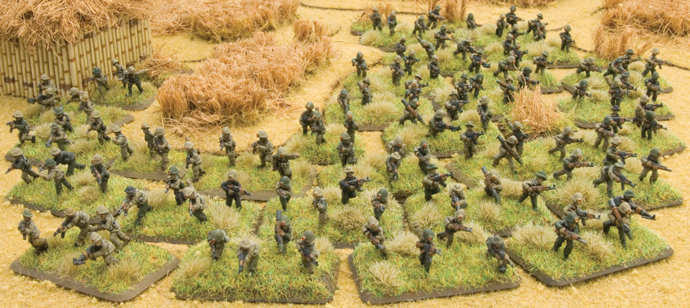
Author: lukegl
‘Nam Quick Reference and Victory Points Sheets
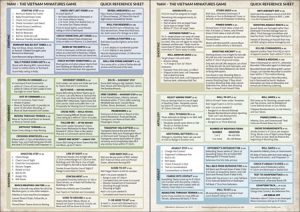
‘Nam Downloads
Numerous people asked for a handy quick reference sheet for ‘Nam and the ‘Nam victory points score sheet from the back of the ‘Nam rulebook. So we have made PDF versions of them for you to download and print out, and perhaps have it laminated.
 |
‘Nam Quick Reference sheet – Two A4 Sheets
‘Nam Quick Reference Sheet pdf Download (right click save as)… |
| ‘Nam Victory Points sheet – One A4 Sheet
‘Nam Victory PointsSheet pdf Download (right click save as)… |
|
Operation Hastings
With Carsten MacLean
By early 1965, South Vietnamese forces had suffered a series of significant defeats. Despite spending much of the already decade-long war fighting an irregular opposition, the tide seemed to be turning, culminating in resounding defeats at the Battles of Bình Giã and Đồng Xoài. As a response to this shift in the fortunes of war, the United States unilaterally deployed 3500 Marines to South Vietnam. Initially, these Marines were tasked to assist in the defence of the American ally and ensure neither Viet Cong (VC) nor the People’s Army of Vietnam (PAVN) could conduct success conventional operations against the South. These troops were quickly reinforced, and over 200 000 Marines would be on the ground by the end of the year. Army and other forces totaled thousands more. The American plan was fairly simple: initially, American forces, supported by her free world allies and South Vietnam, would commit enough forces to put a stop to North Vietnamese advances and seize the initiative. Following this, the US would conduct their own offensive operations, pushing the North Vietnamese forces out of key areas and reducing their strength. Finally, if necessary, American forces planned to hunt down remaining enemy combatants and destroy their ability to fight, ensuring the conditions for a safe and secure Vietnam. As we know, these plans did not unroll exactly as the United States would have liked.
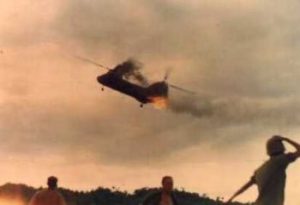
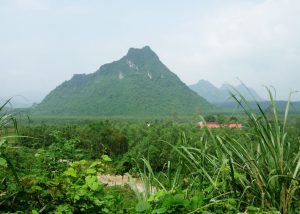
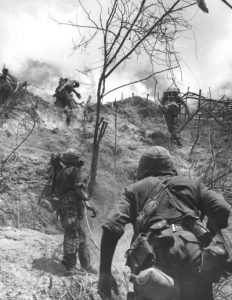
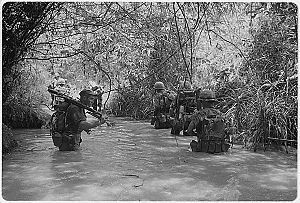
In preparation for the assault, B-52 strategic bombers dropped countless loads of explosives on suspected PAVN positions. Meanwhile further south, American transport aircraft dropped pallets of supplies to supply the Marines that would soon be on the ground. Supported by A-4 Skyhawks and F-4B Phantoms, the Marines inserted via CH-46 Sea Knight helicopters on the morning of the 15th of July. Landing in two drop zones, the first wave of Marines inserted quietly, with the second wave coming under sniper fire from PAVN forces. It was the third wave, though, that represented the first significant losses of the operation. While trying to land in the dense jungle, two CH-46s collided with each other in mid-air and crashed. When a third took evasive maneuvers to avoid them, it hit a tree and also crashed. Later, another helicopter was hit by PAVN anti-aircraft fire and went down in the same area. What was previously known as the Song Ngan Valley had become known, to the Marines of Task Force Delta, Helicopter Valley.
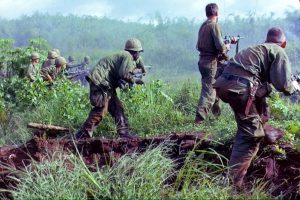
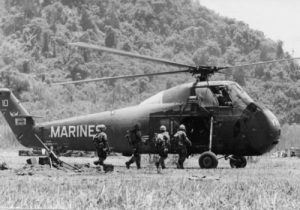
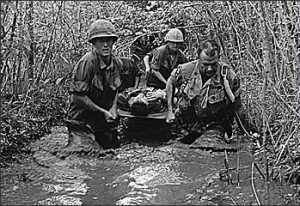
‘Nam Recommended Reading
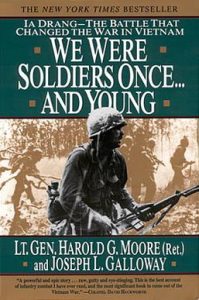
Pleiku – The Dawn Of Helicopter Warfare (J.D. Coleman)
Incursion (J.D. Coleman)
A Life In A Year: The American Infantryman in Vietnam (James Ebert)
We Were Soldiers Once… An Young (Lt. Gen. Hal Moore & Joe Galloway)
Wings Of The Eagle (Gary Linderer)
Chickenhawk (Robert Mason)
Platoon Leader (James McDonough)
Warriors (Robert Tonsetic)
The 13th Valley (John Del Vecchio)
If you’ve got a book about the Vietnam war you think should be on here feel free to jump into the ‘Nam Facebook Group and share it.
Fate Of A Nation – Tale Of Four Gamers
It can be hard work making your way through the steamy jungles of Vietnam so if you are looking for something different you can check out what the Breakthrough Assault team have been up to. Four members of the team have decided to start building their own Fate Of A Nation armies with a Tale Of Gamers challenge with a difference.
A Tale of Gamers is organised between a group of friends and the aim is to finish a project over an agreed amount of time. By adding a timeline to their challenge this means there needs to be rules… and consequences. The consequences are how you incentivise yourself to not fall behind whilst applying the punishments to your friends (or foes!) can be almost as rewarding as finishing the army itself.
Check out their first post here where they explain exactly what they are up to…
If you like their idea then you can either challenge your friends to do the same thing (either with ‘Nam or Fate Of A Nation) and share your results in our Facebook Group. We have our 25% Discount Launch Sale going if you want join in the fun, or if you just want to take advantage of the sale to pick up some T-55, PT-76, M48, Centurion or M113s at a good price!
Building a US Army for ‘Nam
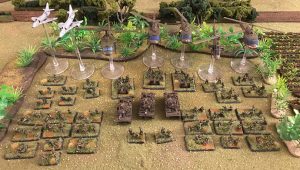
It all started one rainy day back in April. I was enjoying the latest podcast for No Dice No Glory on my daily commute to work and listening to my good friend, Tom Mullane espouse the latest version of Flames of War: Nam. Little did I know that one hour and twenty-six minutes later, it would be another project that I had become inspired to undertake.
A few texts here, and a bit of Googling there and the plan was set. I would be putting together the American force, while Tom would seek a more enlightened Communist path, building an absolute horde of PAVN.
This was not my first foray “In Country”. A few years ago I took advantage of Battlefront’s 40% off sale on the Vietnam model range, and had bought small starter forces for both PAVN and Americans (Because, Huey’s!), but suffering from another case of shiny model syndrome, meant they had sat waiting on the shelf until their moment for battle came around. That time was now, but first I’d have to establish what other models I needed to properly field my army.
Being something of a wargames butterfly, I knew I wanted a force that was varied, as well as fitting in with the picture of a typical American company in Vietnam that I had envisioned. This meant I would take an infantry company at the core of my army. I couldn’t resist bringing them to the fight in Huey’s, so I took a few helicopters to transport them too.
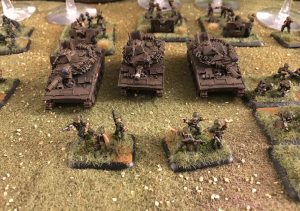
Until the Sheridan’s arrived, however, the infantry would have to rely on calling in artillery support when coming into enemy contact. This would come in the form of a squad of mortars and a battery of 3 105mm gun pieces. I knew I’d be facing large amounts of enemy infantry and having the ability to drop a couple of artillery templates on them would be an effective countermeasure.
Continuing to enjoy the benefits of Free World firepower, I rounded out my helicopter contingent with a couple of gunships. I already had a Hog, which I would field as a Gatling-armed copter, then added another Cobra.
The final piece of air support I took was a pair of Skyhawks. I love the models, and again, chose them because I find them emblematic of the Vietnam War. I just hoped that I’d have better luck with them than my German Stuka dive-bombers in Mid-War!
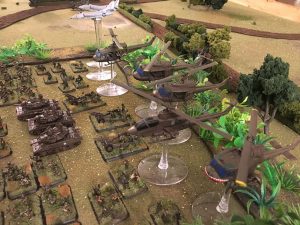
Some people may frown at this, but if I embark on a new project that I am determined to see through to completion, I make myself a chart that tracks various stages of progress. You can see an example of the one I used to build this army, below. I find that not only does breaking the process down into manageable chunks make progress seem more achievable, but also checking a box off each time I complete a milestone becomes a satisfying reward unto itself. It may not be for everyone, and I’m sure it seems quite a rigid process to some, but I do find the results beneficial.
The infantry were the most complex minis to paint – who knew adding three different colors of blobs onto a hundred or so helmets would take so long! The extra time it took was certainly worth it and I found the final result rewarding. The sculpting is incredibly detailed. As I moved through the painting line, I was delighted to see little details on the webbing, and the quality of the guns.
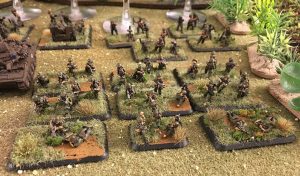
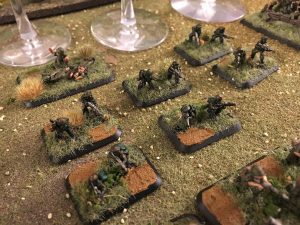
Starting the project in February and continuing at a fairly relaxed pace of a few nights every week, I’ve just been able to finish the project by the beginning of the summer – roughly five months. The miniatures are now ready to play their first game against Tom’s PAVN. Although, the idea of painting my own Vietnamese force does sound appealing. And I do think some APC’s would be a good addition. On to the next project!
~Shane
Operation Buffalo
With Alan Graham
“Operation Buffalo was a motherf***er” , … Cpl John D. Musgrave, Medically Retired (Rifleman, 3d Platoon, D Company, 1st Battalion, 9th Marines, 1967-1968)
Operation Buffalo saw the worst casualties inflicted upon a single Marine Rifle company in a single day throughout the entire Vietnam war. B Company, 1st Battalion, 9th Marines which had started the day with approx. 150 men, lost 60 KIA, 60 WIA leaving less than 30 troops fit for duty.
Background
Just south of the DMZ (Demilitarized Zone or the Dead Marine Zone as the Marines themselves called it), Con Thien was a United States Marine Corps base intended to form a strongpoint on the McNamara Line.
The McNamara line was supposed to be a wide (approx. 600m) protected strip of land that stretched several miles from strong-point to strong-point containing obstacles, minefields and sensors and was constructed to prevent the NVA (North Vietnamese Army) from infiltrating large forces across the DMZ. Construction started in the Spring of 1967 and actually limited the Marine’s combat activity due to the resources required to build this defensive system. This area was known as Leatherneck Square because of the Marines situated in the surrounding bases at Con Thien, Gio Linh, Dong Ha and Cam Lo.
For an old US News Archive about Marine life in Con Thien see here…
The 324B NVA Division had tried several times already to infiltrate across the DMZ and the Marines had managed to thwart these attempts formulating a series of operations including Operation Hastings, Prairie I-IV, Cimarron to name a few and, at the beginning of July 1967, Operation Buffalo.
2nd July
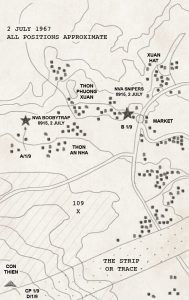
Click on the maps to see a larger version of them.
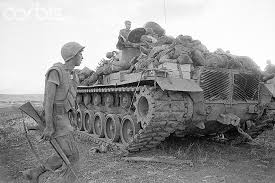
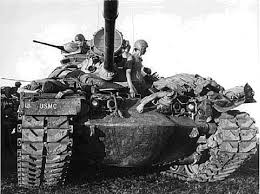
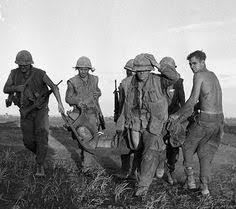
A Company meanwhile still remained in contact with the enemy and after successfully medevac’ing its first set of casualties, found their LZ being mortared then assaulted. However, by holding a defensive position and with K Company and artillery support they held their ground until the evening when the enemy finally withdrew.
At the end of the day, the battalion counted the total number was 53 KIA, 190 WIA and 34 missing (eventually leading to a count of 84 KIA).
3rd to 5th July
From the Combat After Action Report, Operation Buffalo, “…The NVA Forces appear to be fully aware of the Marine tradition to remove all wounded and dead from the battle field. Evacuation efforts were covered by enemy artillery, mortar and small arms-fire…”
More men were brought forward to recover the MIA. Companies I, K and L, 3/9 and a Battalion Landing Force 1/9 along with a couple of M48 tanks were moving back up to the Marketplace.
Continuous airstrikes the previous day had prepared for the attack, but heavy resistance was still met by the Marines, resulting in another 15 KIA and 33 WIA. Finally, there was relatively little ground contact and so the MIA could be searched for and almost all were found and returned to Con Thien.
6th and 7th July
There were still several significant actions within Operation Buffalo, one of which was the establishment of a patrol base by Alpha-Charlie Company, 1st Battalion, 9th Marines, 3rd Marne Division. This base was over 1km forward of the battalion line, just less than 2km South of the DMZ, in a hamlet called Thon Phong Xuan. While on early morning patrol A-C company discovered an unoccupied NVA Bunker complex which they then themselves occupied with a three-sixty perimeter and waited. Towards early evening, lookouts spotted approx. 400 NVA marching in column to the bunker complex and radioed ahead. The Marines then sprang their ambush and immediately caused significant casualties among the NVA, the rest immediately ran for cover to the sound of their bugle. The NVA soon re-organised and had mortar rounds coming down on the Marines, and were pushing forward through the bushes, and a series of repeated assaults were attempted which were pushed back throughout most of the night.
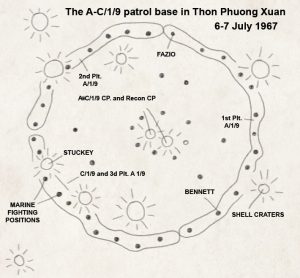
8th July
The last significant fighting took place South-West of Con Thien when G Company BLT 2/3 discovered a bunker complex, after taking a small amount of fire, artillery and air support was immediately called to attack it. The follow up operation still found some NVA continuing to fight, eventually the bunker complex was cleared with 2 Marines KIA and 29 WIA. G Company reported 39 dead NVA.
9th to 14th July
There were no more significant ground operations, only harassing artillery fire.
The operation ended on the 14th July.
The Marines reported enemy dead at 1,290 KIA and 2 captured. Marine losses in contrast totaled 159 KIA and 345 wounded.
References
- Operation Buffalo: USMC Fight for the DMZ by K.W. Nolan 1992
- U.S. Marines In Vietnam: Fighting The North Vietnamese, 1967 by Gary L Telfer; Lane Rogers; V Keith Fleming. https://archive.org/details/FightingTheNorthVietnamese…
- https://en.wikipedia.org/wiki/Operation_Buffalo_(1967)…
- Vietnam Tankers, Operation Buffalo, 2nd July 1967, https://www.youtube.com/watch?v=b34it0qisi4…
- http://www.talkingproud.us/Military/WalkingDead/WalkingDead.html…
NAM: Up the River at No Dice, No Glory
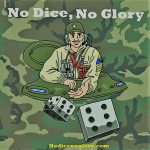
Breakthrough Assault – Nam Demo Day At Entoyment Hobby Store
